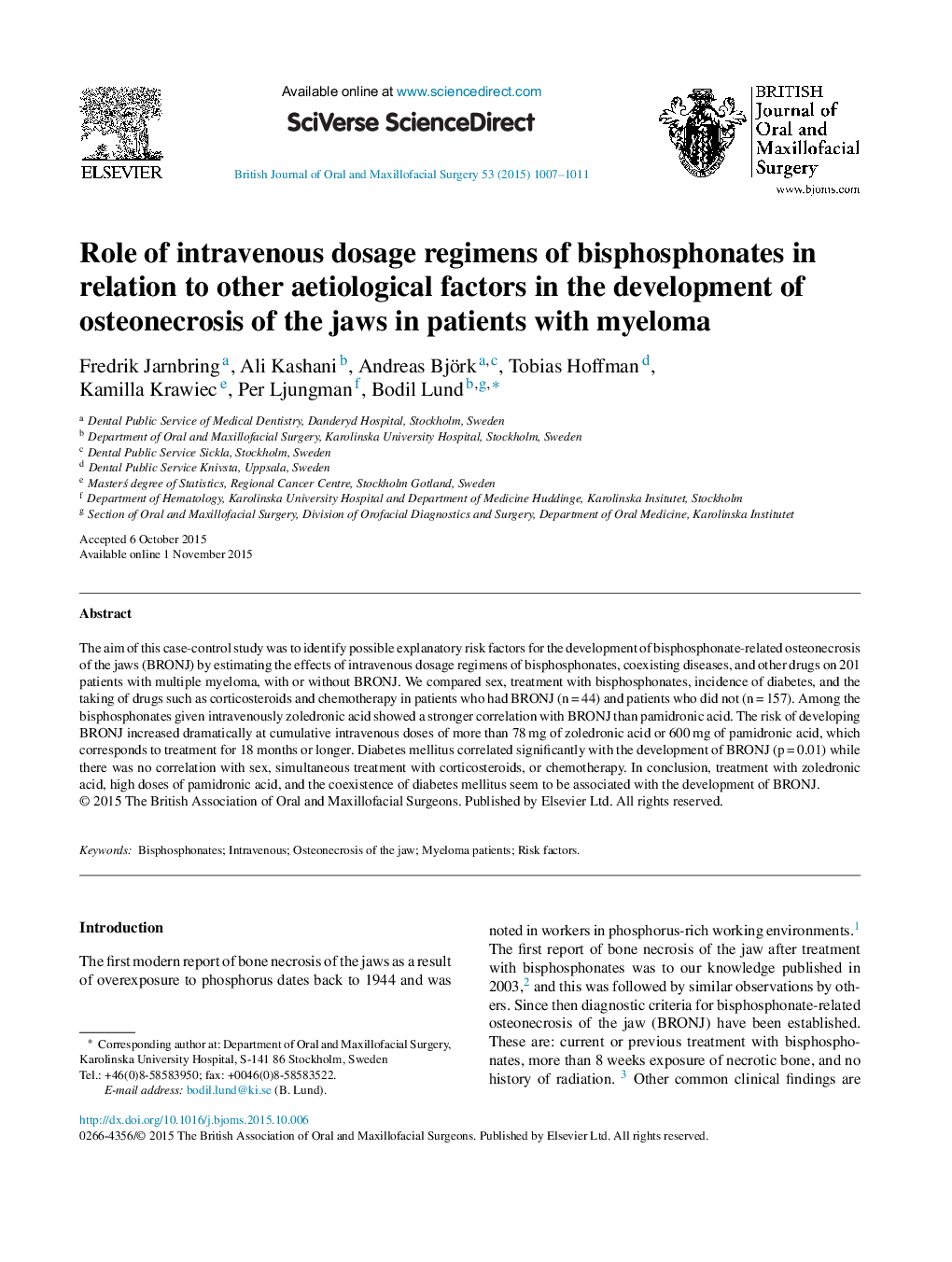| Article ID | Journal | Published Year | Pages | File Type |
|---|---|---|---|---|
| 3123580 | British Journal of Oral and Maxillofacial Surgery | 2015 | 5 Pages |
The aim of this case-control study was to identify possible explanatory risk factors for the development of bisphosphonate-related osteonecrosis of the jaws (BRONJ) by estimating the effects of intravenous dosage regimens of bisphosphonates, coexisting diseases, and other drugs on 201 patients with multiple myeloma, with or without BRONJ. We compared sex, treatment with bisphosphonates, incidence of diabetes, and the taking of drugs such as corticosteroids and chemotherapy in patients who had BRONJ (n = 44) and patients who did not (n = 157). Among the bisphosphonates given intravenously zoledronic acid showed a stronger correlation with BRONJ than pamidronic acid. The risk of developing BRONJ increased dramatically at cumulative intravenous doses of more than 78 mg of zoledronic acid or 600 mg of pamidronic acid, which corresponds to treatment for 18 months or longer. Diabetes mellitus correlated significantly with the development of BRONJ (p = 0.01) while there was no correlation with sex, simultaneous treatment with corticosteroids, or chemotherapy. In conclusion, treatment with zoledronic acid, high doses of pamidronic acid, and the coexistence of diabetes mellitus seem to be associated with the development of BRONJ.
